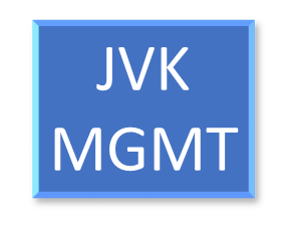Martial Arts Works The Mind And Body
/A class of 7-9 year-old students graduate to their next belt at Atomic TaeKwondo in Huntington.
By Sophia Ricco
sricco@longislandergroup.com
Martial arts students at Atomic Tae Kwon Do are training not just their bodies but their minds as well to be ready for any obstacle life may throw.
The Huntington village martial arts studio, opened by Master Bart Pontecorvo and Dr. Luiza Raab-Pontecorvo in 2006, focuses on teaching life skills through taekwondo and jiu jitsu. After meeting through taekwondo, the couple wanted to blend Pontecorvo’s career in occupational therapy with Raab-Pontecorvo’s creative side. Their massive space hosts an open floor of mats and a “connection” zone, where cell phones are prohibited so parents watch and support their children.
At Atomic, it’s all about creating positive pathways in a student’s brain when they attend class. They become aware that people react and interpret situations based on how their brain is wired. Instead of reprimanding students with “three strikes,” students have “three opportunities to make it better.”
Master Bart Pontecorvo and Dr. Luiza Raab-Pontecorvo teach martial arts as a workout for both the body and the mind. Long islander News photos/Sophia Ricco
“Just because I’m a master doesn’t mean they have to listen to me,” Raab-Pontecorvo said. “It’s more that if I have a good influence on them, then they will trust me and will learn, because we have good energy.”
Atomic offers five 10-week sessions a year that students can join at any time, and holds belt tests in between. They keep students engaged by holding two classes a week with dynamic lesson plans and over 900 drills for various ages. They play fun games with younger students, so instead of punching a bag, they “throw snowballs.”
“It’s all about creating a story in their mind, if they have a fun story, then they can put themselves in a very optimistic state,” Raab-Pontecorvo said. “When do you learn the best? When you’re in the right state.”
Atomic understands students come after school with varying emotional states and many have been sitting at a desk all day and just want to let loose. To bring tranquility, they begin class with students taking time on the mat to find calmness and stillness through breathing.
“Parents ask us, ‘How do you make them sit and stay still? I can’t even do that at home for two seconds,’” Raab-Pontecorvo said. “It establishes a habit for when they are older and get stressed out. They know to take three breaths before responding to someone.”
Every age group has its own set of life skills students are working to master. Ages 3-4 work on skills like kicking and punching; ages 5-6 focus on teamwork; ages 7-9, courage and perseverance; and ages 10-14, versatility and vision.
“It’s physical, but it’s also very mental,” Raab-Pontecorvo said. “You fight yourself in your mind to find discipline.”
Martial arts functions as a social and individual sport, where students learn to work with one another, while progressing at their own speed. Each class, one skill is taught through drills tailored to practice the skill.
“At 5-6, the teamwork skill is introduced because it’s pre-academic. They’re preparing to go school, so they need to learn how to play nice with others, how not to fight or brag, and how to encourage others,” Pontecorvo said. “Through different physical exercises, we encourage these social skills.”
Raab-Pontecorvo studied the concept of “neuro-linguistic programming” at the Human Communication Institute in Arizona and applies the technique by combining physical activity with mental stimulation.
“Many people have a narrow mindset that martial arts is kicking bags and punching,” Raab-Pontecorvo said. “That’s not what it is at all. The skills we teach are so complex with the moves and that’s when you start increasing memory space, because your brain has to analyze it and your neurotransmitters are firing.”
Once a student masters a skill, he or she receives a stripe on their belt and after receiving eight stripes can move on to the next belt. Each belt color corresponds to a specific character trait, like empathy or perseverance, making each a symbolic accomplishment.
“When you’re growing as a black belt, it’s not because you’re awesome at self-defense, it’s about having these traits within and knowing you have tools to get better,” Raab-Pontecorvo said. “They will face life situations completely different from someone else, who might fall apart in certain situations.”
Atomic also teaches adult classes to students from 16 to 60-plus. Each come to the mat with their own motivation.
“For some it’s just hitting that bag because they’re stressed out and want to release it,” Raab-Pontecorvo said. “Many of them, have found their bodies become stiff with age and want to work on their flexibility. And others come for self-defense, because they want the tools to protect themselves and their families.”








